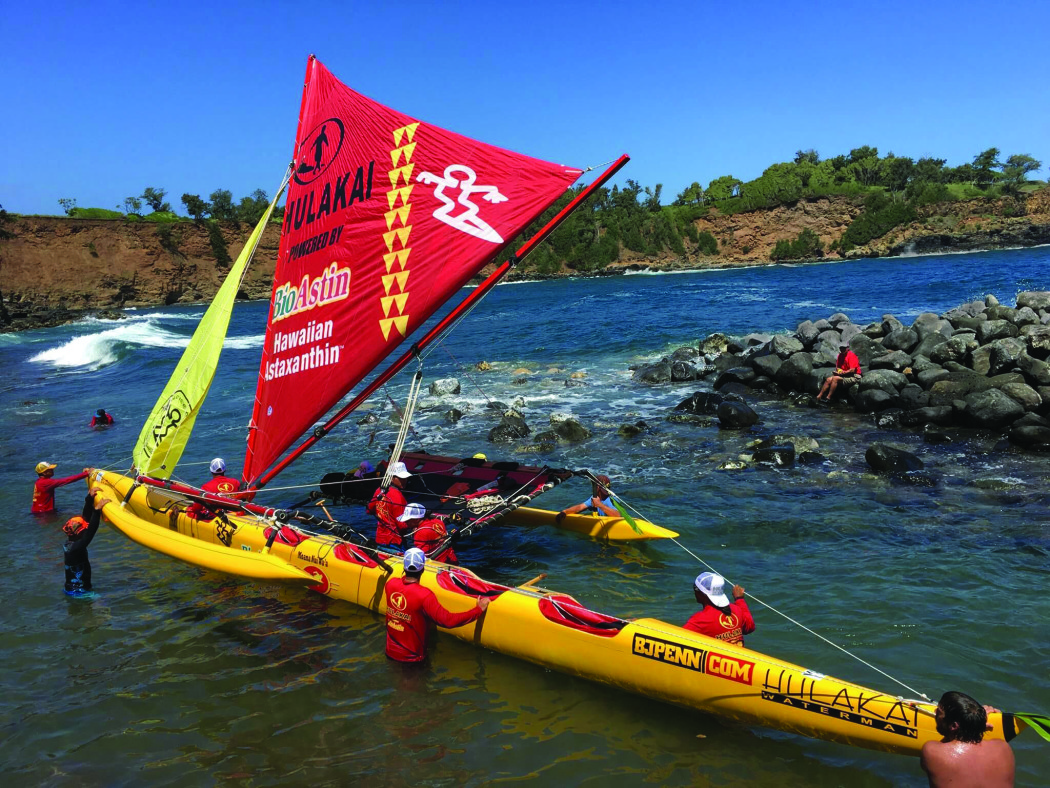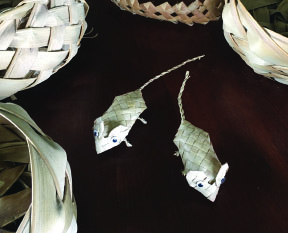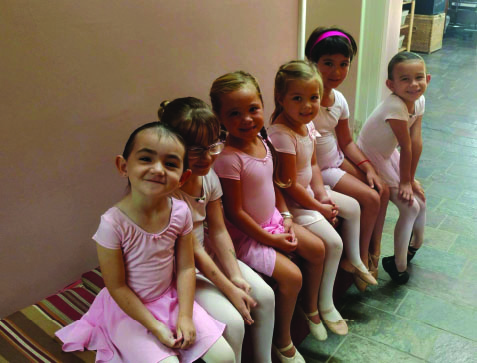
Kona Dance and Performing Arts Creates More Than Great Dancers
Beyond Shuffle Steps and Pointed Toes
By Karen Rose
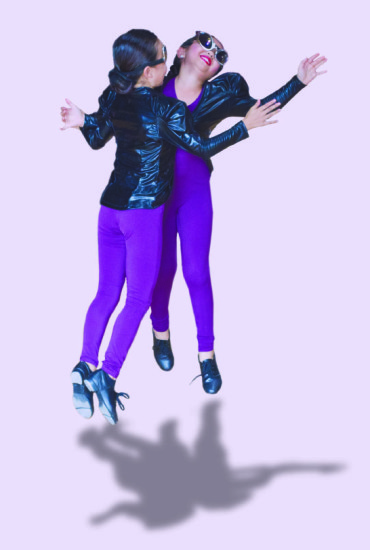
Five, six, seven, eight! Every dancer is well acquainted with these four numbers. For the young students of Kona Dance and Performing Arts, their training goes beyond dance and into life lessons that count. This group of dedicated dance parents and teachers have created an environment for keiki (children) that not only develops and nurtures the art of dancing with your feet, but dancing with your heart.
Amanda Trusty, artistic director for Kona Dance and Performing Arts, lights up when she talks about the journey that began in February 2016, and brought the organization to fruition. She is proud of Kona Dance’s focus on developing the many important attributes of a growing child. Dance education facilitates a child’s ability to mature physically, emotionally, socially, and cognitively. While most people understand the physical benefits of dance, the emotional, social, and cognitive attributes have only recently begun to be appreciated.
Recognizing the role dance could play in their children’s development, this group of parents sought out a space, specifically in the South Kona community, to fulfill the need for an intensive performing arts program. In doing so, they formed a non-profit organization with the mission of providing high quality dance instruction and education to local youth and the Hawai‘i Island community.
Their perseverance paid off when they found the perfect location on Haleki‘i Street in Kealakekua. The building came complete with a dance floor, mirrors, barres, and space to add a dressing room. However, when something seems too good to be true, it usually is, and in this case the floor turned out to be completely termite-ridden.
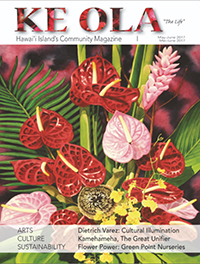
Upon this destructive discovery, board president Dana Mattos came to the rescue and got down on hands and knees for three days and filled every termite hole. Mason Termite & Pest Control also joined in the community effort and donated their time to rid the building of the pesky critters. After four months of the laborious dedication of volunteers, Kona Dance opened their doors on June 6, 2016.
“It took a lot of deep cleaning and hard work. Now we have this beautiful 2,025 square foot space where we hold our classes,” said Amanda. “That summer we also held a four-week musical theater intensive and had about 20 students every week. Then in July and August we did an eight-week summer program where we had a lot of returning students. We started our regular season on September 8 and that’s been running ever since.”
Amanda is quick to point out that high quality dance education, while being the main subject taught at Kona Dance, is certainly not the only skill their students learn. She is proud of the organization’s dedication to teaching their students self-care, time management, stress management, and how to develop a personal practice regimen at home.
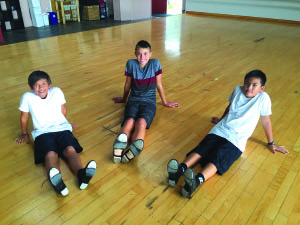
“There are so many dance teachers that are like, ‘Go home and practice‚’ and kids don’t know what that means,” she said. “So we felt it important to add additional skills to their lives. Like, what does it mean to come to class specifically to learn new things and not to practice? You don’t just come to class to learn to dance, you come with a goal. For example, a student may come to class wanting to fix something they’ve been having trouble with, or to learn how to balance on their left foot. We want to know what their personal goals are, because you don’t just dance with your body, you dance with everything you’ve got.”
The teachers at Kona Dance teach skills like injury prevention, strength training, and social awareness. Most of the teachers didn’t receive this kind of education as young dancers. It was all about how high they could kick, how well they could turn, or how pretty they could smile while performing. While dance is indeed an excellent form of exercise, dance also offers an avenue to promote psychological health and an appreciation of oneself and others.
“We recently took some of our advanced performers to Hilo and performed for a benefit concert,” said Amanda. “We talked with the students about what it’s like to work with tech crew and stage managers they’ve never met. The dancers’ manners were so amazing. They said thank you to everyone they met and people actually commented about how impressed they were with our performers’ character.”

Amanda explained that it’s not just about creating great dancers or great performers. It’s also about learning to network with other dancers and being socially and emotionally intelligent—for example, complimenting other dancers and thanking people who are helping them. It’s learning to not take things personally and encouraging the students to open up to their teachers if they need extra support or encouragement.
“We encourage the dancers to come to us if anything happens… if their parents are separating, or they received a bad grade at school,” said Amanda. “It’s not an excuse for poor behavior, but it’s important to know how to share that information then leave it at the door. It’s learning how to use dance to express emotions like anger, frustration, and sadness. Those are the things we are working on with the students that go beyond pointed toes and shuffle steps.”
Amanda and the other teachers at Kona Dance understand the importance of promoting psychological health and maturity. Their students all begin with their own unique history of emotional experiences—some good, some not so good. Through dance and creative expression they learn to communicate ideas and emotions and work within group dynamics to foster cooperation and understand themselves in relation to others.
“We have several children with their own unique challenges, and the difference we see in their behavior because of dance has been outstanding, especially in how they are now able to communicate with other people, especially adults,” said Amanda. “That has been truly amazing.”
Amanda shared a story about one of her youngest students, eight-year-old Lilikoi, who was a year younger than most of the other students she danced with and had an outstanding stage presence. What she was lacking was a good work ethic, yet she couldn’t understand why she wasn’t moving up in levels while her friends were advancing.
“Lilikoi didn’t understand what practicing meant so we started having conversations about her potential and what that means,” said Amanda. “She had a lot of catching up to do, so for two months she was taking ten classes a week, which is a lot for someone her age. Not long ago I had her improvise for me and something just clicked for her.”
“She had this magical, unicorn-rainbow kind of moment, and I just fell to the floor. Lilikoi went from playing-the-cute-card kind of girl, to this don’t-get-in-my-way-I-can-do-anything girl. She just turned nine and she is one of our biggest success stories and is an inspiration to all of us. She’s proof that if you want something bad enough, you can achieve it with a little extra work.”
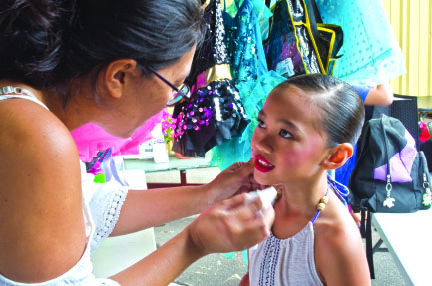
Extra work is something the teachers at Kona Dance are not afraid of. In addition to Amanda and Managing Director Heidi Noche, the other teachers include Debra McGee, Miho Morinoue, Alexis Gaines, Grace Branham, Andreas Tolaas, and Michael Sato. They all dedicate extra time to teach the students how to take care of themselves both during and after dance classes.
It’s important to everyone at the center to never focus on how a dancer’s body looks in terms of shape and size, but rather what their bodies can do with the proper training. They don’t tell the dancers what or how to eat, but how to strengthen and care for themselves in a way that allows them to accomplish their goals regarding dance and performance. We also educate the dancers on the difference between self-judgement and self-critique. Our philosophy is that by teaching students how to critique their movements, both good and bad, it allows them to look at their own skills objectively. It’s about developing character in addition to improving their craft.
A musical theatre major and professional actress, Amanda never thought she would be teaching dance to young children—however she found her calling at Kona Dance.
“Teaching kids was never my dream,” she said. “I taught kids as a teenager and didn’t like it. My ‘aha’ moment when I discovered teaching was my calling, was when I realized I could coach these students on things other than dance. The coaching and the life advice, being real with them, and being a trusted adult they can come to with their problems‚ I wouldn’t trade that for anything!”
“I love teaching more than I ever have. The other parents and teachers at the center share the same goals as me as far as creating well-rounded artists and exposing families to the arts. I enjoy the opportunity to use my life experiences to share with these performers, and break the cycle of the dance training I grew up with, which was detrimental to my health, my body and honestly, my heart. It’s an opportunity that I’m very grateful for.”
Kona Dance teaches keiki and teens starting as young as three years old. The youngest classes begin with creative movement and exercises that connect body development to brain development. They also offer special teen and teacher assistant programs to mentor teenagers in their development as young adults to help to boost confidence, social skills, work ethic, and offer them an opportunity to teach younger dancers with the guidance of professional teachers and choreographers.
The center offers classes in tap, jazz, ballet, musical theatre and contemporary dance training as well as hip hop, breakdance, African dance, keiki yoga, and improvisation. They also collaborate with other Hawai‘i Island art organizations such as the Big Island Music Academy, Aloha Performing Arts Company, and dance studios in Hilo. Their dancers perform regularly in the community at nonprofit events to artisan markets, parades and festivals.
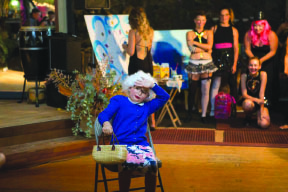
On June 3 and 4, Kona Dance and Performing Arts will showcase their choreographers’ and students’ work in three dance concerts at the historic Aloha Theatre in Kainaliu. Shows start at 2pm plus a special 7pm performance on June 3. Tickets can be purchased at apachawaii.org. All proceeds from ticket sales will go toward funding Kona Dance’s summer and fall programs. More information about performances and upcoming summer and fall programs can be found at konadanceandperformingarts.org.
Dance embodies one of our most basic primal instincts. As humans, we often dance before we can speak. Rhythmic movement is innate in children and is often summoned when emotions are too powerful for words. We dance naturally because it brings joy and good feeling. When performing artists harness that movement in a structured way and bring conscious awareness to those movements—it’s called dance. ❖

